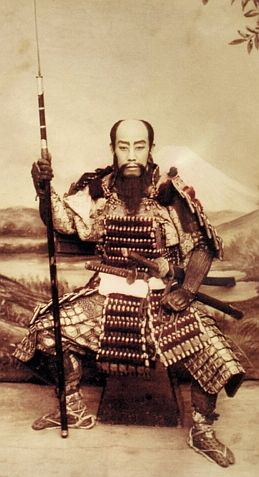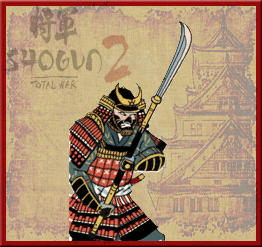How a Samurai Becomes a Ronin
The word “ronin” is a term popularly used in Japan for samurais who have no masters. This also pertains to vagrants or wanderers. It was mainly used during the Nara and Heian Era for runaway serfs who decided to abandon their master’s land to live on their own.
These type of people eventually become criminals as a means to support themselves. Through time, this pattern further became common among struggling rogue samurais.
Many samurais who had been banished from their clans or who have decided to part ways with their lords found robbery or other violent criminal acts as a means of livelihood.
Who Were the Original Samurais?
Samurais were hired warriors or relatives of a rich landowner. They banded together for the purpose of protecting the interests of the landowner.

In earlier times, a samurai could quit being a warrior and change profession. They might even marry to a different class and change masters without too much restriction. This was before a samurai became a class of its own, pertaining to highly skilled and loyal warriors. In fact, they even became one of the most revered class during the Japanese Edo period.
It was also during the Edo period when the samurais were prohibited from changing masters or even find a new means of employment. This is the reason why there was a sudden surge of ronin during this era. It is only through the blessing or permission of a samurai’s former master that a ronin can serve or work for a new lord.
Many ronin during this period turned into mercenaries or merchant body guards in order to earn money and keep up with their samurai status, while other ronin decided to turn into rogue criminals who use their samurai skills to rob and extort money from other people.
How Samurais Become Ronin
There were different ways a samurai could lose a master and become a ronin. One of the most common reasons was the passing away of their master. The second top reason is when their master decided to renounce their association for different reasons.
During the war, samurais who lost their master in the battle spent their time as a ronin only for a short period of time.
A daimyo will usually find them afterwards and recruit them back to battle once again. However, as the war began to die down the need for more samurai slowly diminished.
Once there was no more war in Japan, ronin started living a difficult life, especially since there are no new daimyo who would take them in.
Some ronin found a way to live by serving new masters from within the family of their former master. However, there are also those who thought this practice is unacceptable and unbecoming of a samurai. These ronin preferred to take their own life than pledge their loyalty to another master.
According to bushido, the code of honor of a samurai, when the samurai’s master died in the battle, the samurai was expected to commit seppuku or ritual suicide in order to keep their honor.
What is Seppuku?
Seppuku is a ritual suicide that was utilized by either a daimyo or a samurai in Japan. This ritual was also widely-known as harakiri. There were many reasons why a samurai would commit seppuku all of which are usually based on bushido or the samurai’s code of honor.
During the Edo period a samurai committing seppuku had to undergo a more detailed step by step process of the ritual.
The warrior had to first be bathed, dressed in shini-shozoku or white kimono and then served his last meal consisting of all his favorite food before he could do seppuku in front of an audience. The warrior would have to write his death poem before he eventually took his life using the knife provided to him.
One of the most common reasons a samurai committed seppuku was when they lost in a battle.
A samurai who lost in a battle, but was able to survive, often committed seppuku in order to regain their honor.
Committing this ritual saved both the reputation and social standing of the samurai and the samurai’s family.
Seppuku could also be used by a samurai to punish themselves after causing shame or disgrace to themselves or their masters.
Samurais who were about to be captured could also use seppuku as a way to escape the torture and shame from being captured or defeated by an enemy. A daimyo might also command a samurai to commit seppuku in case of conflict.
There were some rare instances when a daimyo was summoned to commit seppuku. This practice was usually implemented as a part of the peace agreement. A daimyo may commit this act in order to end their reign of its dynasty.
What is Bushido?
Bushido is the code of conduct followed by a samurai.
 The details of this discipline were developed during the Kamakura period in Japan, reflecting a warrior’s way of life.
The details of this discipline were developed during the Kamakura period in Japan, reflecting a warrior’s way of life.
The details of bushido are composed of various influences such as Zen Buddhist and Confucian teachings. It was during the Edo period when the teachings of bushido were ratified and merged with the ideals of Confucian ethics.
This ratification had a significant impact among the samurais, stressing the importance of obligation or duty above anything else.
Although all the other components were still there, such as fearlessness during battle, value of martial, military and athletic skills, kindness, frugality, honesty and honor, the teachings tilted towards the weight of the obligation of a samurai to its lord or master.
The teachings of bushido played such a major role in the history of Japan that many pre-modern texts have been published to create a more general application of its teachings. One sample of this is the Book of Five Rings by Miyamoto Musashi.
This is how a samurai became a ronin. It reflects how a samurai’s way of life was defined by their honor and obligation to serve their daimyo and how they could easily lose their way without a master.
